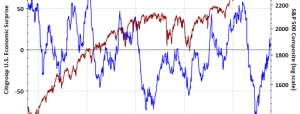By Russ Allen, Online Trading Academy Instructor
I love options for the tremendous variety of strategies they offer. One of the more creative ones is the Double Vertical spread. This strategy is appropriate when you have a strong bullish or bearish opinion on a stock or ETF; you want a limited-risk trade; and you want a trade that will not be affected too much by changes in volatility.

There are other strategies that could be used in this same situation, such as a directional butterfly. But I like the double vertical when I believe that there is a lot of potential for movement in my direction. Here is an example:
On February 9, USO, the exchange-traded fund that tracks the price of crude oil, was at $19.64. It’s chart appeared like this:

It looked as though the downtrend might have been broken. Prices had a very long way to go on the upside, even to get back to the $28 mark from where the big December breakdown occurred. Implied volatility, at over 56% was very high, meaning that options were expensive.
A double vertical includes two separate bullish vertical spreads. A Bull Put spread is put on at strike prices below the current price. This will generate a credit since the higher strike put will bring in more than the lower strike put costs. As long as the stock remains above the strike prices this credit will be ours to keep.
In this case, the May 18/15 bull put spread, consisting of a short put at the 18 strike and a long put at the 15 strike, could be sold for a net credit of $77 per contract (selling the 18 put for $1.19 and buying the 15 put at $.42). If USO closed on the May 15 expiration date at any price above $18 per share, both of these puts would be worthless and this $77 would be clear profit.
The second part of a double vertical spread is a bull call spread at higher strike prices. These strikes are selected so that the cost of this spread is less than the credit received for the bull put spread while still being within a price range that the stock might exceed.







